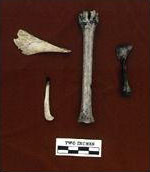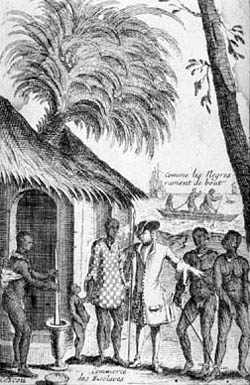Low Country Foodways through the Archeologist’s Lens
Foodways encompasses all activities related to food, from procurement activities (e.g. hunting, fishing, and gardening) to preparation, serving, and consumption. Archeological analysis of the characteristics of the faunal remains that is bones of animals and fish as well as shells of crustaceans, founding slave sites is one way of finding out what enslaved people ate. The food amounts and methods of preparation can also be deduced from study of faunal remains. Vegetal food consumption is more difficult to determine from archeological study. Floatation studies of excavated earth, that is immersing it in water, in search of floating seeds provide some information. Even absence of seeds suggests preparation methods. Excavation of artifacts such as gardening tools, bowls, pots, fishing weights, gun parts, flints, and gunshot provide evidence of how people acquired their foods.
The findings of all the foregoing archeological methods are biased by the relatively small size of the samples as well as the effects that cultural and natural processes have on faunal and vegetal remains. For example, soil temperature, acidity, and moisture may have destroyed evidence of animal foods through decomposition of matter. Cultural processes like curing meats with or without the bone in or the milling grains affect what archeological remains are found or how they may be interpreted.
The examination of human skeletal remains to search for evidence of nutritional adequacy is another lens through which one can explore foodways of long dead enslaved people. These kinds of studies are problematic because of the inability of scientists to determine if factors other than diet caused changes, they may see in bone or teeth (Reitz, Gibbs, and Rathbun 1985:168–170).
Archeological Evidence and Interpretation

Faunal remains—Deer (top left) Squirrel (bottom left), Sheep (center), and Opossum (right) found in excavation of enslaved people’s quarters at Mount Vernon.
West African culture was thoroughly woven into the daily lives of South Carolinians in the colonial era. Material evidence of this influence comes from both archeological and architectural studies. In reference to archeological material evidence, Singleton cites Wheaton and Garrow excavations of slave quarter sites at on Yaughan and Curriboo Plantations (Singleton 1988:351).
This essay examines some of the evidence about foodways of colonial enslaved people in Low Country reported in three archeological studies of slave quarter sites inhabited between 1700 to 1800: Spiers Landing, Berkley County, South Carolina (1700–1800), Yaughan (1740–1790), and Curriboo (1740–1800) in St. Stephens Parish, South Carolina. There were a minimum of 15 enslaved people living at Spiers Landing at any one time and 20–30 people at each of the other sites at any point in time (Reitz, Gibbs and Rathbun 1985).
Faunal remains from Spiers Landing included bones from wild animals such as coons and wild birds and 50% from pigs and cows. Only six kinds of animals were represented in the assemblages in sharp contrast to the 30 or more kinds of animal remains found in coastal sites occupied later (1790–1860). Remains of plants included evidence of peaches, corn, beans, acorns, hickory nuts, walnuts, and wild grapes (Reitz, Gibbs and Rathbun 1985:177).
At Yaughan and Curriboo, enslaved Africans subsistence and food preparation patterns, derived from analysis of faunal and vegetal remains, ceramics and kitchen artifacts, suggest enslaved peoples living there primarily ate a vegetal diet consisting mostly of rice and maize supplemented by peaches, nuts, a little domesticated pig meat, and less wild meats.
Extensive floatation samples resulted in a relatively small number of identifiable seeds leading Wheaton and Garrow to conclude that the grains were thoroughly milled, a feature of West African food preparation (Wheaton and Garrow 1985: 256).
Small caches of arms were found in each of the sites, greater numbers in the late Yaughan site. Wheaton and Garrow comment that the arms found were constant over time but a careful review of the list of artifacts shows that in actual numbers four times more arms artifacts were found at Curriboo as compared to early Yaughan. At late Yaughan the most shot, ball and sprue were found. In fact, more arms artifacts were found than farm tools at both the Curriboo and late Yaughan sites (Wheaton and Garrow 1985:254). In spite of the finding of arms in all three sites, most of the faunal remains found were domestic animals. The researchers comment that meat was probably not common in the diet leaving one to wonder what were the uses of these arms and why were they hidden by enslaved people at Yaughan and Curriboo?






